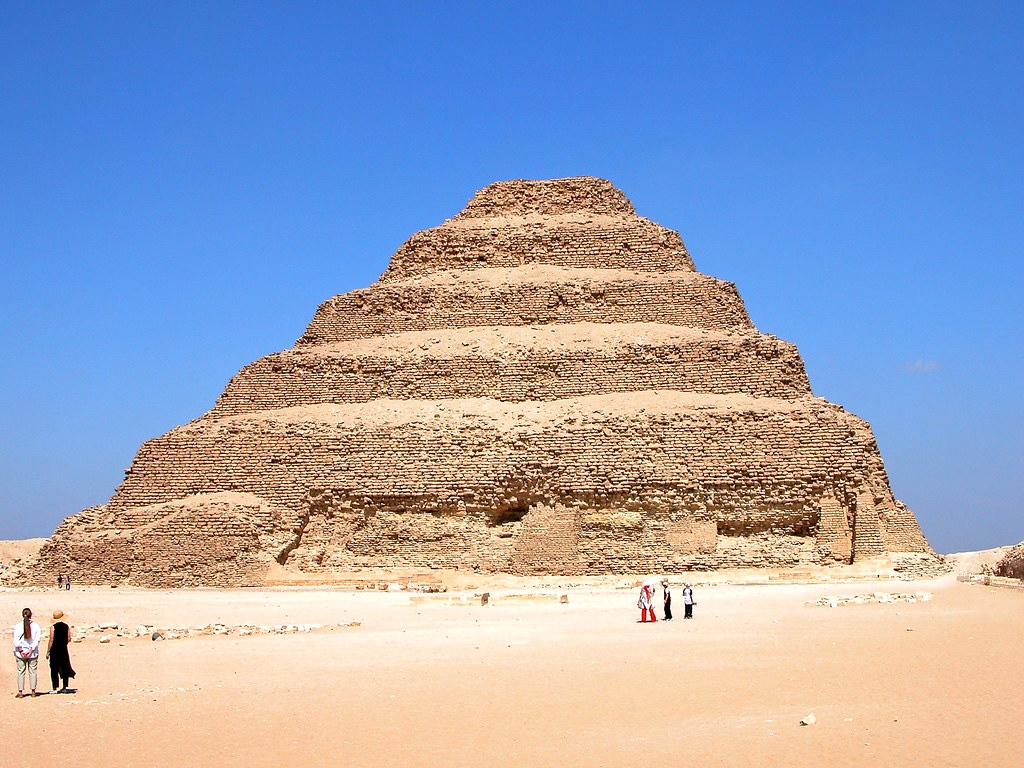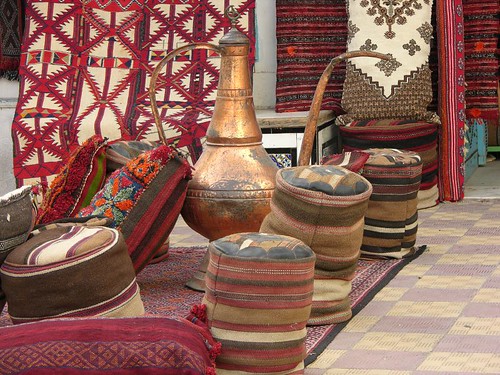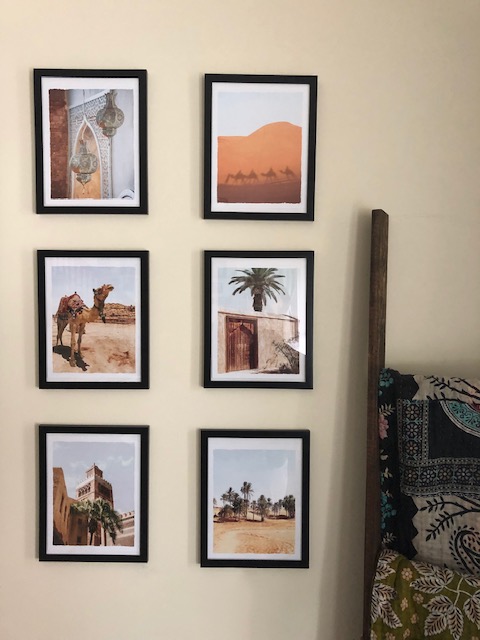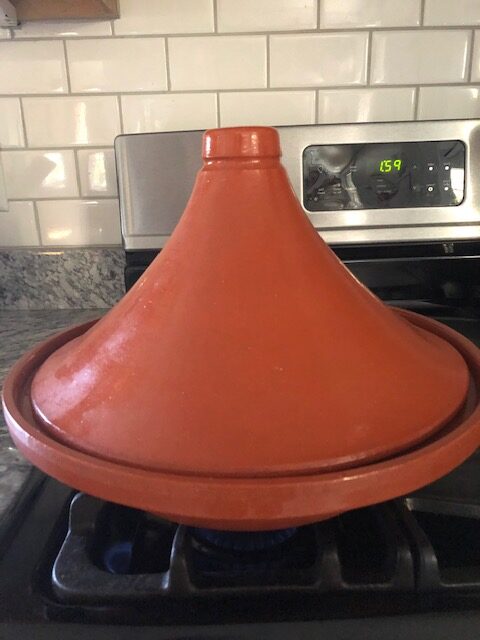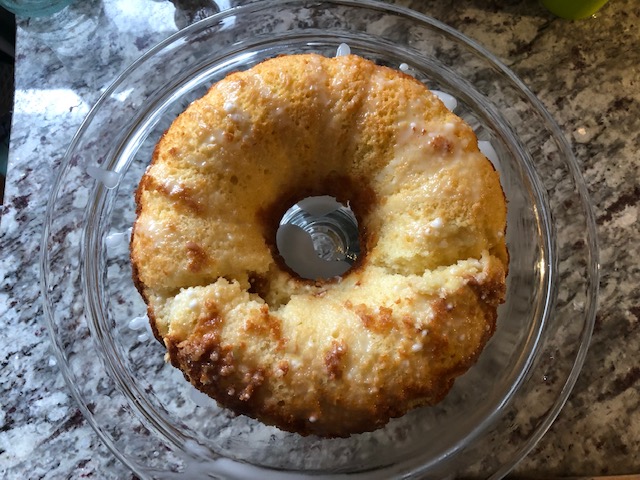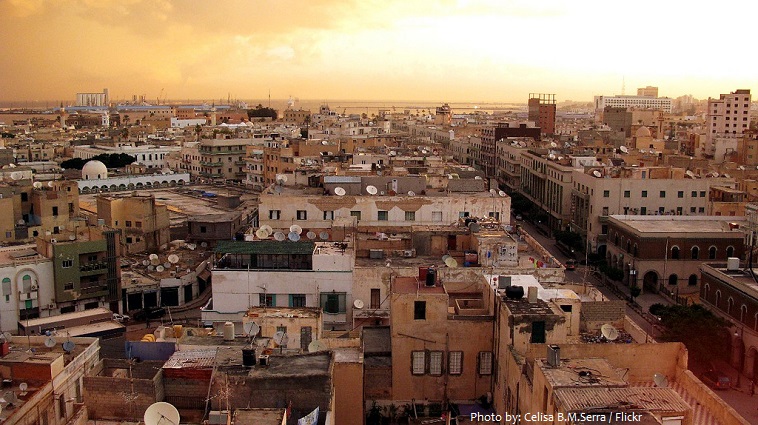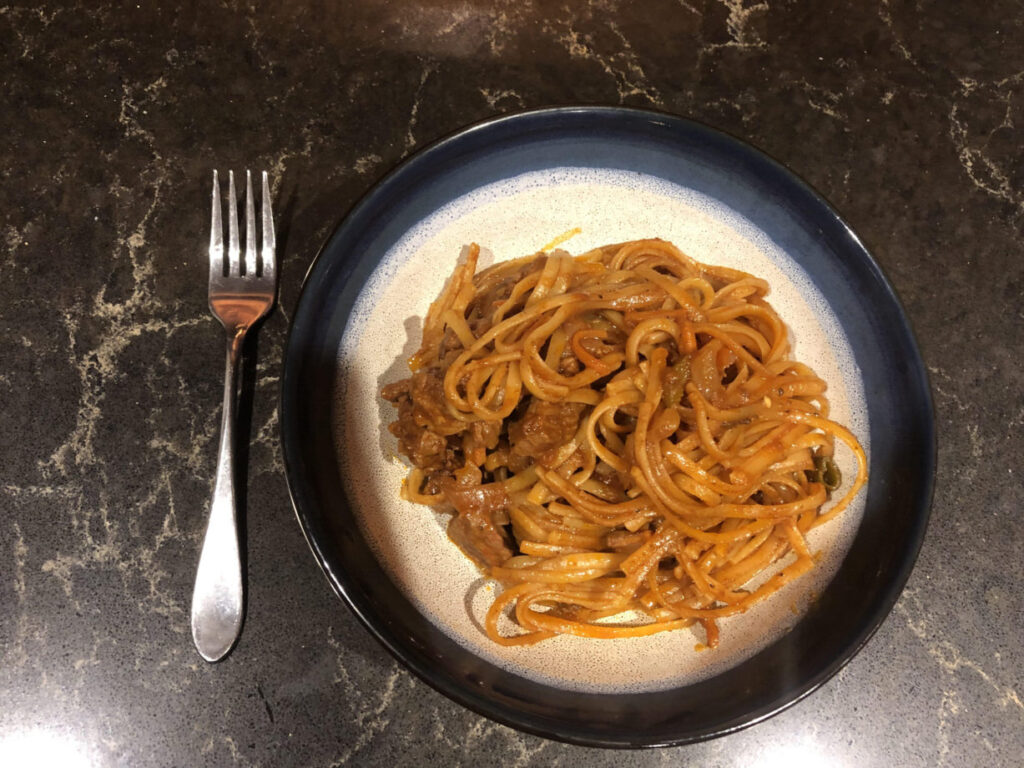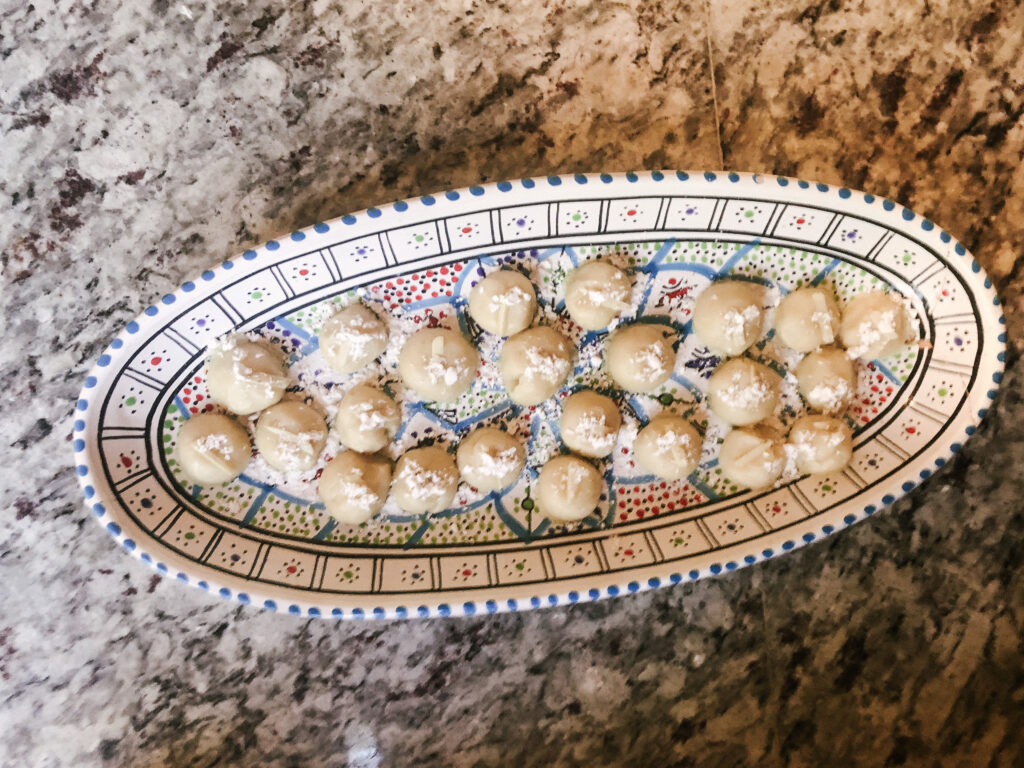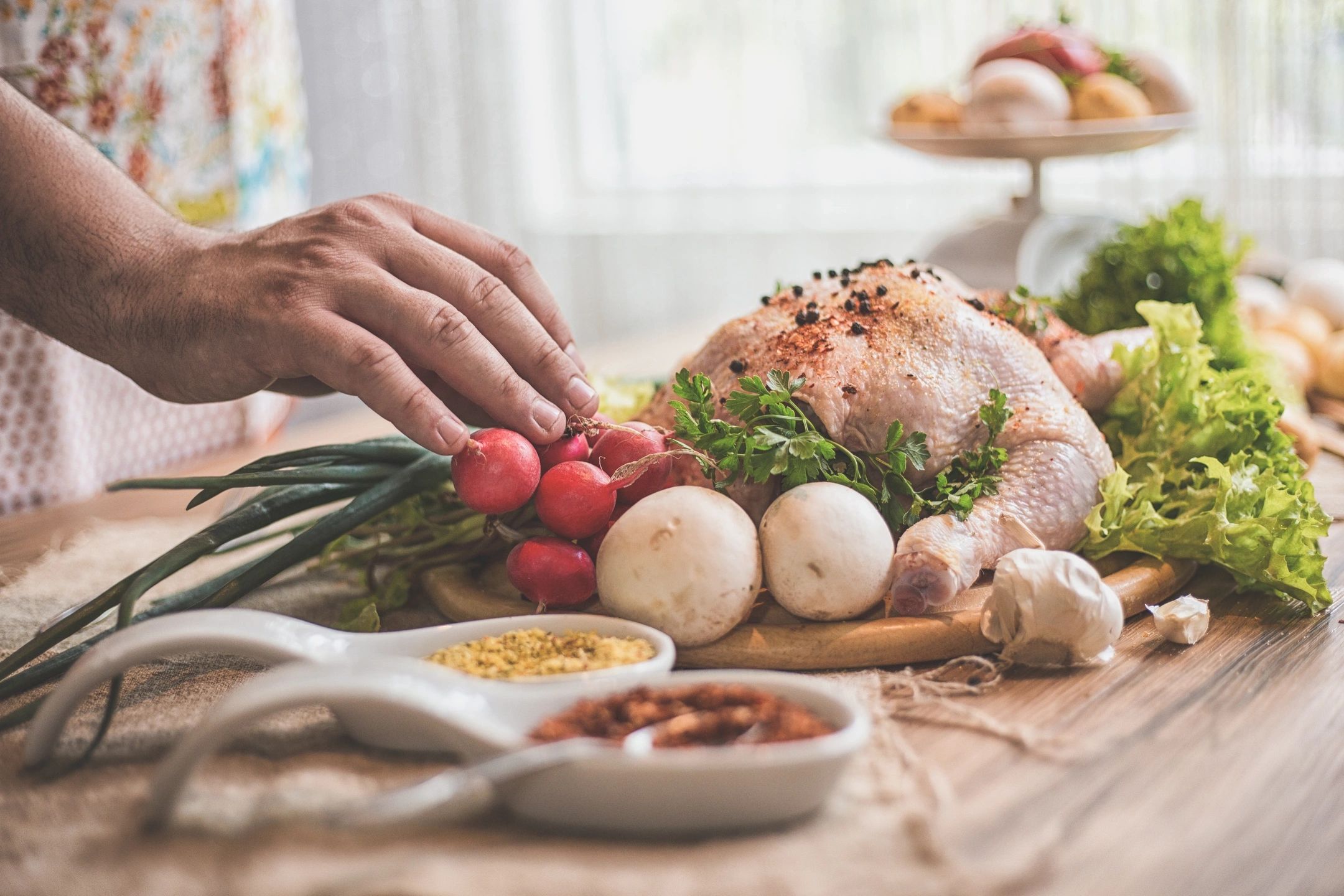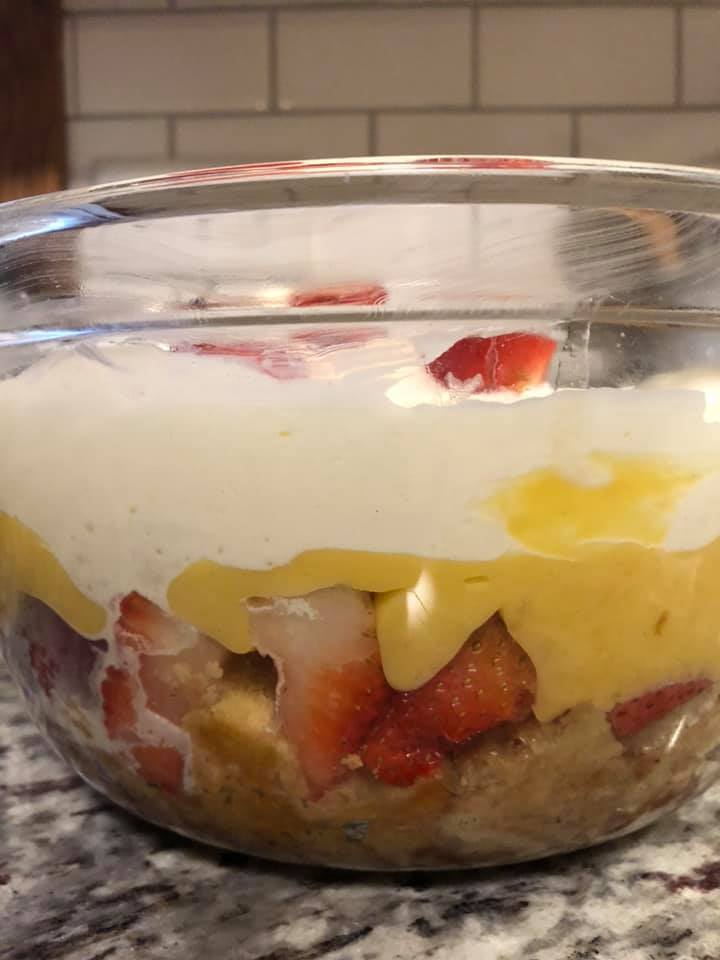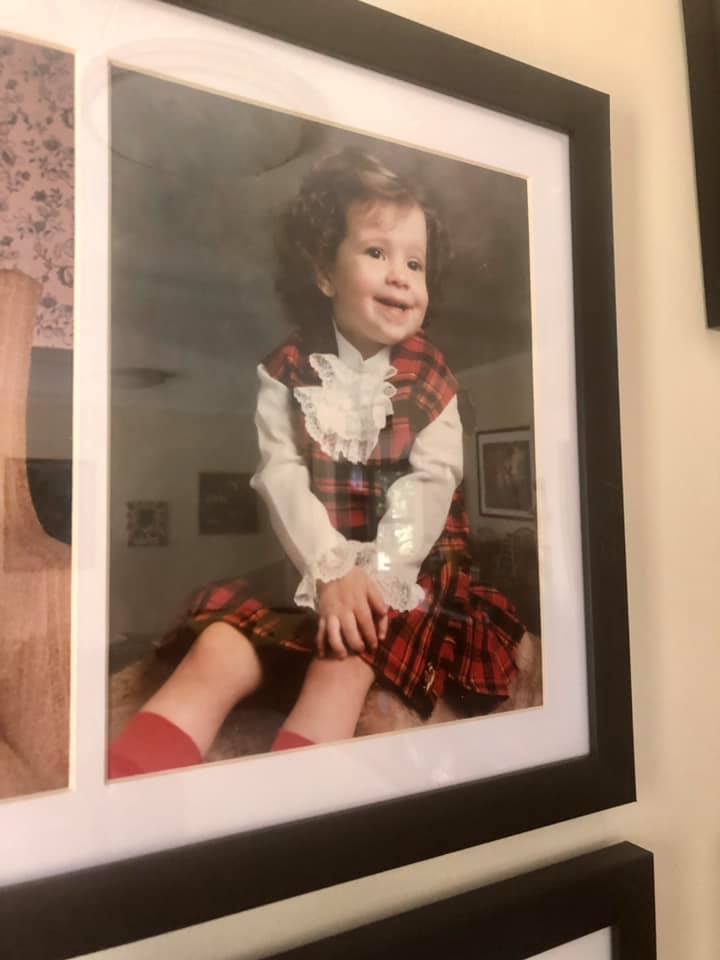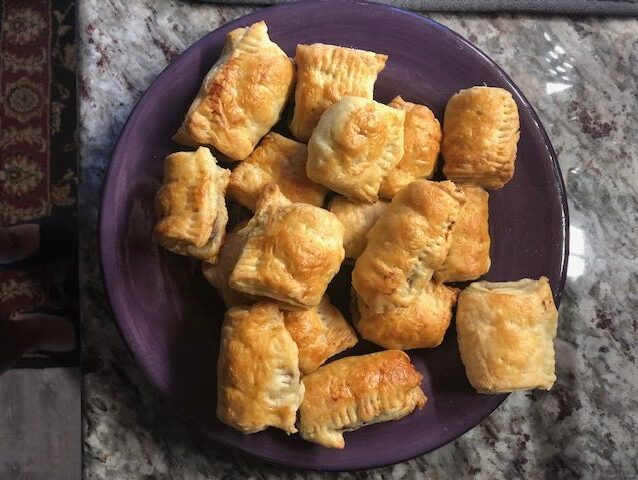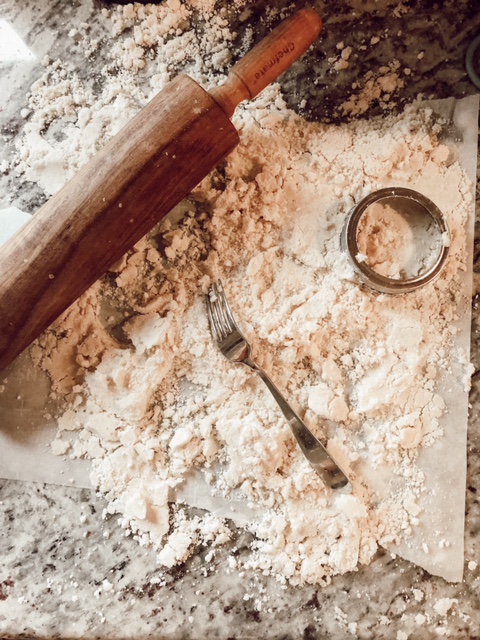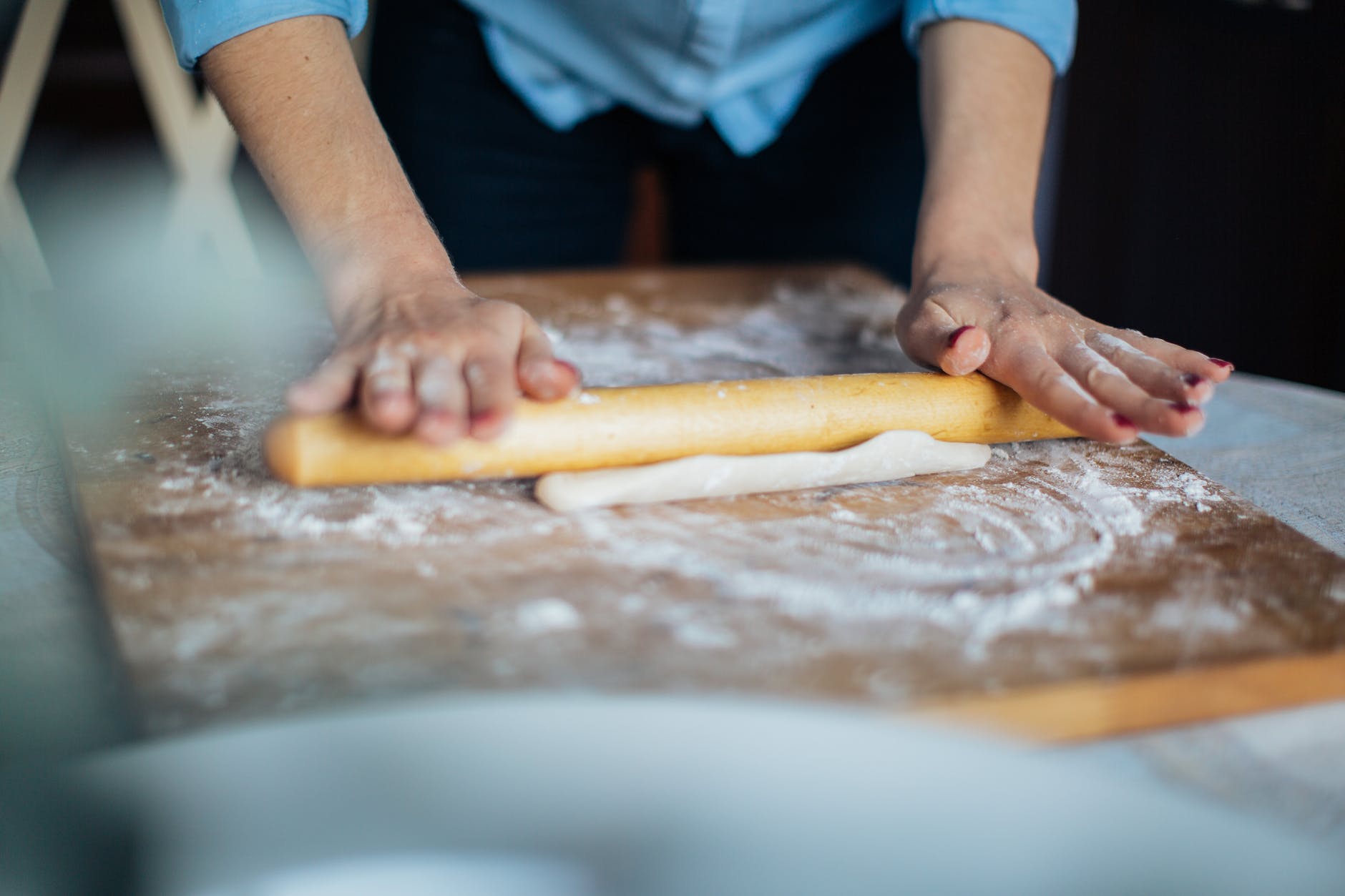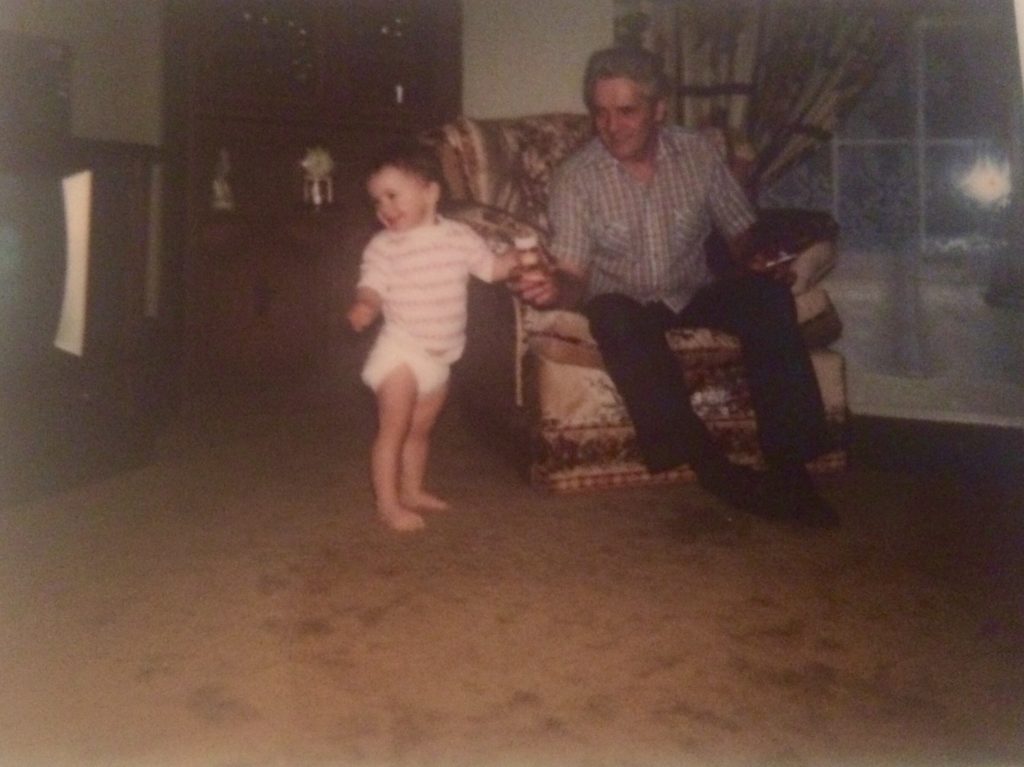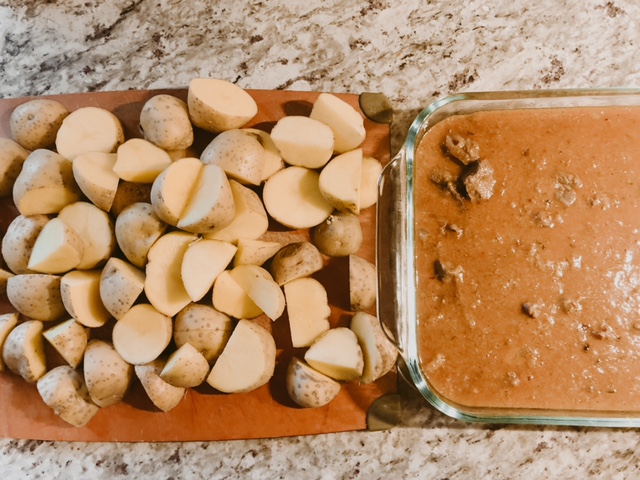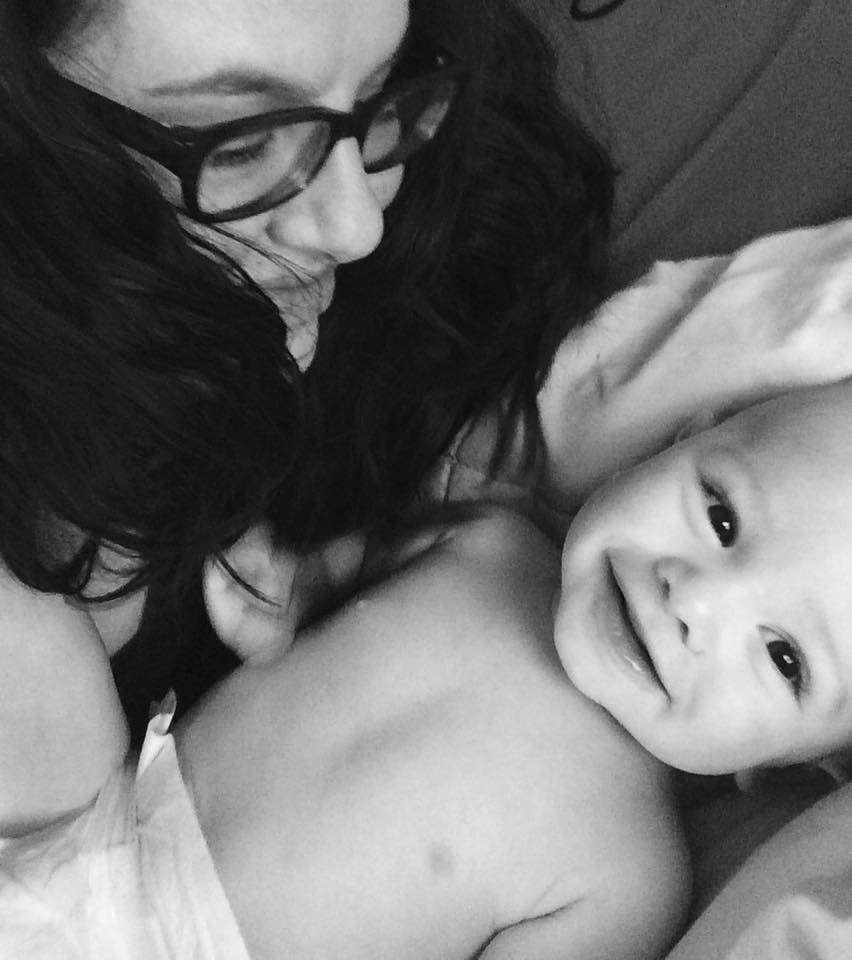-
The Table of My Ancestors: Week 9 (Egypt)
To read the post that started it all, click here!
The percentage of my DNA that’s Egyptian is small, but I was thrilled to discover I had some. Egypt’s always fascinated me, and I really wanted to dive into researching this amazing country.
What I’ve discovered is that while the art, culture, mythology, and history captivates me, the food…did not. (Gulp.) Most recipes I came across didn’t appeal to me, and I knew that they’d be a hard sell on my family, too.
However, I was determined to stick to the spirit of this project, so I dove in this week with hawawshi (pronounced ha-WOW-she). These are sold everywhere in markets in the major cities and are like Egyptian hamburgers, in a sense — but I can confirm after trying them that they’re waaaay better. The meat is mixed with onion, garlic, bell pepper, and jalepeno, and then you add a beautifully warm spice mix that includes cumin, paprika, cardamom, and more. The meat mix is stuffed in pita pockets (I made my own using a quick 10-minute dough!) and baked at a high temperature until the beef is cooked and the pita is crispy. Served with homemade hummus and pita chips, it was a simple and surprisingly delicious meal!
I also made halawet el moulid, a sweet that is sold during Egyptian moulids. A moulid is a festival that celebrates the life of a saint (both Muslims and Coptic Christians celebrate them in Egypt). Since All Saints Day and All Souls Day fell at the beginning of the week, I wanted a way to honor those who have been lost this year, so I decided to make halawet el moulid. It’s basically candied nuts with sugar and honey, and they are very, very sweet. I didn’t particularly care for them, but it did provide me with a meaningful connection to the Egyptian people during some of our holiest days.
Featured photo: “Egypt-12B-021 – Step Pyramid of Djoser” by archer10 (Dennis) is licensed under CC BY-SA 2.0
-
The Table of My Ancestors: Week 8 (North Africa – Tunisia)
To read the post that started it all, click here!
Tunisia is one country I admittedly don’t know much about, so I was a bit hesitant to try recipes from there without doing some research. I learned that harissa is very common in Tunisian cooking, and since we love spicy stuff in our family, I figured it would be a hit. I also was eager to learn more about Tunisia because I know that the ancient city of Carthage is a modern-day suburb in Tunis, Tunisia’s capital. Carthage, I learned in my Christian history class this year, was the site of the martyrdom of Perpetua and Felicitas, two women who were martyred for their faith and whose accounts of their persecution fascinates me.
But back to the cooking.
I chose a simple chicken dish that I found on a global recipes website. It was basically chicken in a broth of cinnamon, cumin, coriander, salt, garlic, onion and, of course, harissa. I served it with rice and with a drizzle of pomegranate molasses overtop, as suggested. It was a hit! Both my husband and daughter went back for seconds, and I found that the heat of the harissa was sweetened nicely by the pomegranate.If you’d like to give it a try, you can find the recipe here!
As I close out my month of North African cooking, I have found that I’ve loved using spices and flavorings that are uncommon in our traditional Western meals — saffron. Ras el hanout. Cardamom. Harissa. These are staples in North African recipes and add such depth and richness to the meals that I really think we’re missing out by not using more of them! It is a beautiful thought to imagine my ancestors, my great-great-grandmothers and beyond, somewhere in a kitchen in North Africa, flavoring the meals they prepared for their families, much as I did. I wonder if they marveled like I did over the stunning yellow that saffron adds. If they licked their lips as I did when adding tablespoons of ras el hanout. I will never know them, never know their names or faces, but it is such a comfort to think that this thread, at least, ties us together.
Featured image is “Tunisia” by fabio.dilupo is licensed under CC BY-ND 2.0
-
The Table of My Ancestors: Week 7 (North Africa – Morocco)
To read the post that started it all, click here!
Morocco has always been on my list of countries I’d love to visit, so it was a lot of fun learning more about it through cuisine this week! When I think of Moroccan food, the first thing that comes to mind is tajin (or tagine). Tajin is a rich stew consisting of meat, fish, or poultry, often including vegetables or fruit, such as apricots. The stew is cooked in a clay or ceramic pot (also called a tajin) that dates back to the 9th century.
I chose to do a beef tajin, which consisted of onion, stew meat, garlic, cinnamon sticks, and a variety of spices like nutmeg, salt and pepper, and ras el hanout. The stew cooks on the stove for several hours; after two, some of the liquid is removed from the tajin and reserved for later use. Once cooked, it is topped with apricots that are in a simple syrup made from honey, cinnamon, and the liquid from the tajin; fried almonds can also be used, and served over rice, couscous, or with bread. The whole dish is a little sweet, a little spicy, and is one I will definitely be making again — we loved it!
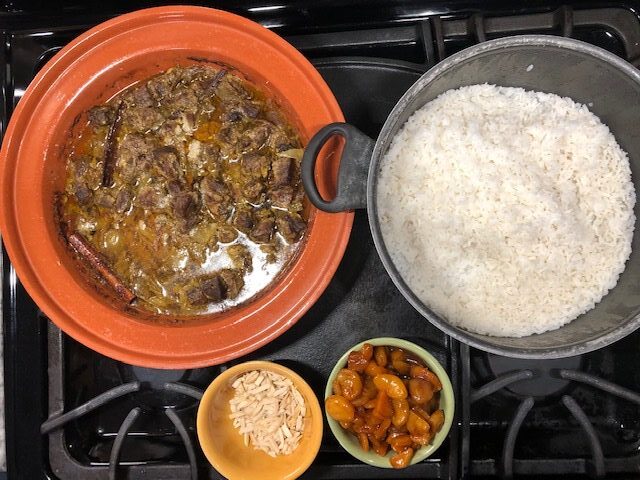
For dessert, I wanted to make a meskouta, a light and fluffy cake that can be flavored with almost anything (oranges, almond and honey, coconut, etc.). My daughter wanted lemon, so I set out juicing lemons, saving the zest, making the glaze, etc. Everything was going well until it was time to turn my meskouta out from the Bundt pan. Despite having liberally greased and floured the pan, a huge chunk of it got stuck and the whole thing ripped as I removed it.
I was devastated. Over a cake.
And at this point, I was tired of being in the kitchen, so I decided just to throw some of the glaze on it and be done.
I could have made a new cake. I really wanted one that was pretty, picture-perfect, even, that I could dust with some powdered sugar and present to my daughter.But it fell apart.
My husband tried to console me by encouraging me to look for the lesson in my meskouta experiment, that sometimes life doesn’t go according to our plans and when it gives us lemons (or in this cake, broken lemon cake) we need to make lemonade.
He wasn’t wrong. What he was saying was true.
But what was also true is that I was disappointed because I had high expectations and had wanted to give my daughter a cake that just…well, looked better.Which reminded me of perhaps what the real lesson was all along, that sometimes, two things can be true at the same time. I don’t need to discard one truth in order to replace it with another. I can hold multiple realities simultaneously while recognizing they don’t cancel one another out. In a world full of such binary thinking, where everyone feels like they have to pick a side because it’s this vs. that, this mindset presents truly a new way forward: a way full of both/and understanding instead of either/or arguments.
Life doesn’t always turn out the way we want it to, and I was disappointed by the cake. Both are true.
The good news is that the meskouta was actually delicious, and neither of my children said anything at all about how it looked.
-
The Table Of My Ancestors: Week 6 (North Africa – Libya)
To read the post that started it all, click here!
This week, I continued discovering my North African ancestry by focusing on Libya, the 4th largest country in all of Africa which is well-known for its beautiful Mediterranean coast (which houses about 90% of the country’s inhabitants) and, just a bit further south, a sparse grassland that gives way to the Sahara desert. I read that Libyan cuisine focuses heavily on olives (and olive oil), an effect left over from the days of Italian colonization.
I had a much easier time finding recipes for Libyan food this week than I had for Algerian cuisine last week. As such, I decided to do both a main dish and a well-known dessert. Both were delicious, and I think I’ll definitely be making them again!
For the main dish, I made One-Pot Pasta with Lamb and Chilies. It required only a handful ingredients (most I already had in my kitchen; I just needed to buy the lamb) and was very simple to make. It starts with a base of onions, carrots, garlic, and chilies fried in olive oil. Then, I added lamb cut up into bite-sized pieces, paprika, tomato paste, and stock. It simmers for about 90 minutes, and then the pasta (I used linguine) is cooked right in the sauce! It was delicious, not overly spicy, and went very well with a glass of good red wine!
The dessert that I chose to make is called Ghraiba, which translates to “stranger” in Arabic (probably because this dessert used to be shipped over from Spain). It is essentially a small shortbread biscuit, only in Libya they are traditionally clove-flavored with a whole clove (or pistachio) pressed in, and they’re served with tea (which is so black and thick in Libya that it’s essentially a syrup). I flavored my dough but used almonds and powdered sugar to top mine so that they’d be a little more of a family-friendly treat (I can just imagine what my kids would say if I tried to get them to eat a whole clove!) I also served some of these to a friend who was visiting, and she loved them.
All in all, cooking my way through Libya was absolutely delicious, and I found a couple of new recipes that will definitely make it into my regular rotation. Next week: Morocco, one of the most zwina (can you tell I’m practicing my Arabic? This Moroccan Arabic phrase literally translates to ‘beautiful.’) countries in the world!
-
The Table of My Ancestors: Week 5 (North Africa – Algeria)
To read the post that started it all, click here!
I remember how shocked I was when I first got my DNA results back from 23andMe. My whole life, I’d grown up thinking I was half Scottish (from my mom’s side) and half Italian (from my dad’s.) My biological father left when I was just a baby, and I had no contact with him after that. I have heard that he passed on a few years ago now.
Anyway, I’d always thought he was Italian. It wasn’t until a few years ago that I learned my father had actually been adopted as a baby into an Italian family. So, as far as his actual ancestry? That was still a big unknown.
When I opened the app to view my heritage results, the first thing I noticed was the big, fat ZERO percentage sign next to Italian DNA. As in, I have none. Or none that they can trace, anyway.
What I do have is a smattering of southern European and North African ancestry, so it’s really exciting for me to explore this completely new area through cuisine and culture this month. To begin, I started looking up common Algerian foods. I learned that a popular dish there is couscous, and I found a great recipe for couscous with saffron, mint, and dried apricots. I served it with some grilled chicken, flatbread, and grapes as dessert. To be honest, the food was just okay. I love the taste of saffron, but I felt like the mint overpowered it a bit.
I loved the time I had preparing it, though. As I did so, I listened to a video about rai music, a form of Algerian folk music that is said to have originated in the port city of Oran among the poor. Women were at the forefront of rai in many ways, which bucked the social and religious norms. The lyrics focused on economic struggles and social injustice, which brought criticism among the elite and the authorities, who were concerned about the rising popularity of the music and its potential to create an uprising among the lower classes. Performers sometimes had to even flee the area because of death threats and fatwas issued against them.
One of the things I love about being a creative, someone who engages in the arts, is that I have seen time and time again the power that art has to enact change. Whether it’s a photo, a song, a book, a painting — art can move and people like nothing else can. It is no coincidence that global history has its chapters of banned books, censored music, outlawed artforms; those in places and positions of authority have historically stifled art that would empower oppressed peoples to rise up and demand change because of their fear of losing their power and control.
It’s precisely for that reason that rai music is so fascinating to me. It reminds me a lot of my Christian faith, the teachings of Jesus about an upside-down kingdom and a great reversal. The last shall be first, the proud and haughty be laid low. Through creativity and song, Algerians and other North Africans embodied the struggles of their society and culture and dared to proclaim a better world and better tomorrows.
It’s kind of like the Gospel, if you ask me.
About the featured photo: “Distinguished Moorish women, Algiers, Algeria, ca. 1899” by trialsanderrors is licensed under CC BY 2.0
-
The Table of My Ancestors: Weeks 3 and 4 (Scotland)
To read the post that started it all, click here!
For food in week 3, I chose to make what is perhaps the most well-known Scottish food: haggis. Now, I’ve eaten it before when I was growing up, and I didn’t like it one bit. But tastes change, and I’m trying to be adventurous during this whole journey, so I decided to give it another go. I found a recipe for haggis bon-bons (don’t worry, no chocolate was involved!) that simply required rolling the haggis into balls, coating them in a flour/egg/bread crumb mixture, and then deep-frying them. Less than an hour later, I had 24 crispy haggis bon-bons ready to go.
And I…did not like them. Neither did my husband. And the kids refused to try them…
But honestly? I was ok with them being a total flop. Because I realized maybe that’s kind of the point of this whole journey. Rediscovering my ancestry does not mean I have to be tied down to it. My past doesn’t need to be my present or even my future. It can simply be.(I am happy to report that the dessert, which was a non-alcoholic tipsy laird featuring layers of vanilla cake soaked in boiled strawberry jam with orange juice (traditionally, whisky is added too), layered with strawberries, homemade custard, and homemade whipped cream went over much better! As did the second dessert I made, cranachan, which is homemade whipped cream with folded in toasted oats and honey, layered with raspberry purée, then another cream mixture layer, and topped with toasted almonds and drizzled with honey.
The other dinner I made was rumbledethumps, which I had never heard of, but I liked the name! The recipe seemed like it was essentially a shepherd’s pie, and it turned out really good! I did omit the turnips and just used mashed potatoes, which worked better for us.
This month, I also came across a great store across the pond called The Scotland Shop. They make clothing, accessories, and home decor out of traditional Scottish tartan, the cloth that represents the different clans of Scotland. As I’ve mentioned, I have always felt connected to my Scottish ancestry, mostly because my family would often reminisce about “the old country” as a way to keep that connection alive. My mother was born in Edinburgh, and she moved to Canada with her sister, my grandparents, and great-grandparents in the 1960s. When I was a toddler, my grandparents fitted me for my very own kilt + vest in the Munro tartan — the colors and design of our family’s clan. I still have that outfit, and the photo of me wearing it hangs in our home. So this month, I decided to order an accessory in the Munro tartan that adult Elena can wear, as a nod to my heritage. It took several weeks to arrive from Edinburgh, but it’s perfect. And whenever I wear this tartan, I will remember I am Scottish and proud.
Now that it’s almost October, it’s time for me to bid Scotland goodbye and set my sights on North Africa. A chunk of my DNA has been narrowed down to that region, which came as a great surprise and provided some insight I would not have otherwise had about the ancestry of my biological father. I’m excited to stock up on saffron and harissa and explore my North African heritage through food, music, art, and more! -
The Table of My Ancestors: Week 2 (Scotland)
To read the post that started it all, click here!
I decided to be a bit more ambitious this week and prepare both a meal and a dessert. For dinner, I made a batch of Scotch sausage rolls, which were easy to prepare (thanks to packaged puffed pastry) and turned out crispier and more indulgent than I could have hoped for! My only regret is that we didn’t have any HP brown sauce for dipping, as it’s a customary condiment for these delicious rolls. I did serve them with oven-roasted carrots and other root veggies.
The tricky bit this week was making the Scottish all-butter shortbread. My mother, born in Edinburgh, was going for her first chemotherapy appointment on Thursday, so I decided make shortbread as a sort of nod to her on the same day. Everything started out well enough. The recipe only calls for five ingredients (butter, sugar, salt, corn starch, and flour), and the dough came together nicely while the oven was preheating.
And then I tried to roll the dough out, and that’s when it all turned to rubbish, as we’d say. It was a humid day, and my kitchen was hot, and even though the granite countertops typically remain cool, the dough heated up quickly and promptly fell apart as soon as it came into contact with the rolling pin.
And yes, I cried.
As I stood there, attempting to reform and reshape the crumbles, I realized what I really was crying about was my mother. The cancer. The prognosis. Being a different country away. The guilt. The wasted years. Our family’s losses. The grief. The trauma. It all came flooding back on a sunny afternoon when she was receiving chemo for her incurable cancer and I was desperately trying to connect with her, connect with my Nana and Papa and Gramma and Da, all those who I’ve loved and lost, through what I thought would be a simple recipe from their homeland.
This is the deep soul-work that accompanies embodied living, embodied cooking, embodied rediscovery of one’s heritage. The body truly does keep the score. It remembers, and it bears witness to all of our strivings, our disappointments, our griefs. And in my kitchen, it was reminding me of a simple truth I’ve been forgetting for a while now: things fall apart sometimes. People, too. And that’s okay.
That first batch of shortbread turned out to be lumpy blobs that surprisingly held together well while baking and crumble nicely when eating. My second batch was much better, in the traditional sense, after some troubleshooting and advice from a few friends. But that first batch, the one that fell apart, is precious to me. A reminder of both the beauty and the tragedy that we all encounter in this thing called life. A physical, tangible representation of the truth that we humans are a sum of a great many things — some altogether lovely, some messy and hard — and that the healing comes when we stop trying to hide away those undone pieces of ourselves.
-
The Table of My Ancestors: Week 1 (Scotland)
To read the post that started it all, click here!
To kick off my month of all things Scotland, I decided to recreate one of my favorite Scottish meals: steak pie. My Papa, who had been a chef at one of the castles back in Edinburgh, used to make this one for me a lot. I thought about him as I coated stew meat in flour, as I sliced the onions, as I brushed the pastry with an egg wash.To this day, I firmly believe my Papa was the greatest man who ever lived. Silver haired with icy blue eyes, all of my early memories have him in them. The way I’d snuggle with him in his armchair. Him spinning me on the merry-go-round. His straight back as he stood at the stove, stirring and tasting and simmering. Food was one of the ways he showed love and oh, everything certainly tastes better when it’s cooked with love, doesn’t it?
To be honest, I chose to start my ancestral journey with Scotland because it’s the largest piece of myself — the one I feel most attuned to. And my Papa (as well as my Nana) are the reasons for that. They spoke of the old country often, and after fifty+ years in Canada, they never lost their thick Scottish brogue. I have long felt connected to the land of their birth (my mother’s birth, too; they didn’t immigrate until she was a young girl), so it seemed fitting to begin the story with them. With Scotland. With a Scottish steak pie which was, admittedly, too heavy-handed on the salt and a little soupier than I would have liked. (I can hear Papa’s voice now: Aye, dinnae mind!) Because it was cooked with love.
A few highlights:
-
The table of my ancestors
I’ve been thinking a lot about families lately. I am a first-generation Canadian who is now an American. My mother, granddaughter of a Rominchal traveler, was born in Edinburgh, Scotland, immigrating with her family just a few years later. For centuries, my family on my mother’s side called Scotland home. Her parents, my Nana and Papa, and grandparents, known to me as Gramma and Da, were vital parts of my childhood, and I have always felt strongly connected to my Scottish heritage.
My biological father left when I was young and has since passed away. He had been adopted as a baby by an Italian family in Canada, but his ancestral roots remain largely unknown. For years, I have struggled with having huge gaps in that part of my story. Who am I? Where do I come from? Where do I belong? These questions have haunted me ever since I was a young child.
So, a few years ago, I decided to take a DNA test through 23andMe, and I set out on a journey — a journey to recover the lost pieces of myself, to take back the story stolen from me through an absent father and a buried heritage. When my results came back, I discovered that the majority of my DNA was traced to Scotland (no surprise there!). But it also gave me clues as to where my father had come from. Present in my DNA was Spanish, Portuguese, Egyptian, North African, and Senegambian & Guinean ancestry as well.
Taking a DNA test was a deeply moving experience, and years later, I am still reflecting on what it’s taught me. It’s given me answers that I normally would not have had access to. I’ve learned that immigration is, quite literally, my bloodline, and I wonder sometimes if that may be why I’m always wandering, even metaphorically, in my search for home. I’m pondering if family is where we come from, or if it is something we make, and I suppose it must be a little of both. I think of the stories my own children will tell of her their heritage, my son of the bloodlines given to him by his father and I, my daughter of the Gola tribe in Liberia, where she was adopted from. Heritage is a curious thing, because in many ways, it’s static, something we simply pass on; but in others, it evolves as our families grow, as we call new places home, as we learn to hold space for all the ancestors we carry within us.
Over the next six months, I am embarking on another journey, beginning a creative project that is profoundly personal for me through culture and cuisine. Each month, I will choose a different country found in my DNA and explore it through cooking traditional foods, researching the language and customs, and more. My word for this year is embodied, and what I’ve learned thus far is that the body remembers. To fully connect with my ancestry, I need to use my physical body: speaking the language with my own tongue, preparing meals with my own hands, hearing traditional music with my own ears. I need a sensory experience, a visceral reaction to immersing myself in the cultures that make up my bloodline. My body needs to remember.
My plan is as follows:
September: Scotland
October: North Africa (Tunisia, Morocco, Libya, Algeria)
November: Egypt
December: Spain
January: Senegambia (Senegal, The Gambia, Guinea)
February: PortugalI hope you will join me on this journey of a deeper self-discovery; perhaps you will even learn about hidden parts of yourself that you have forgotten.
-
Of Mother’s Day
My mother was my first country, the first place I ever lived. — Nayyirah Waheed
I have written many, many times about the complexities of motherhood and how weekends like this one can bring up a lot of really complicated, really difficult feelings. Some of us have strained relationships with our own mothers. Some of us yearn to be mothers. Some of us have no desire to be mothers. Some of us have lost children, some of us have children who want nothing to do with us. Some of us are stepmothers or foster mothers or adoptive mothers or fur baby mothers. Motherhood is a wide open space, and we women tend to find our footing somewhere in the middle of it.
What I find interesting is that this holiday with all of its greeting cards and bouquets of flowers is actually the complete opposite of what it was meant to be. The gross commercialization of a day originally steeped in radical, religious feminism and meant to celebrate the full spectrum of womanhood has led to the American conception of Mother’s Day falling far short from the women’s suffrage and labor movements that birthed it.
Ever heard of Ann Reeves Jarvis? Neither had I. In the years leading up the Civil War, she began organizing “Mother’s Day Work Clubs,” using education to improve women’s access to health and sanitation.
Julia Ward Howe? A Boston poet and suffragette who is famous for penning the words of the Battle Hymn of the Republic. But she also published A Mother’s Day Proclamation, with words such as these:
Say firmly: “We will not have great questions decided by
irrelevant agencies. Our husbands shall not come to us, reeking
with carnage, for caresses and applause. Our sons shall not be
taken from us to unlearn all that we have been able to teach
them of charity, mercy and patience. …”Anna Jarvis, Ann’s daughter, was never a mother herself, yet she repeatedly recalled her mother’s prayer that a day would be set aside to commemorate mothers for “the matchless service she renders to humanity in every field of life.” Following Ann’s death, Anna began petitioning the U.S. government to form a national holiday for mother’s, in her own mother’s remembrance. Two years later, Ann, a Methodist, created her own Mother’s Day service at her church in West Virginia, passing out 500 white carnations in her honor. Progressive and liberal Christian organizations, like the YWCA, picked up the cause and lobbied Congress to make Mother’s Day a national holiday and in 1914, Mother’s Day was signed into law.
So this Mother’s Day, I’m thinking about all the mothers who have come before me, the ones in my very bloodline and the ones who have been grafted in. I’m thinking about my mom’s mom, Nana, and how she left Scotland with her husband, their two daughters, and her in-laws in the late 1960’s to make their way to Canada. I’m thinking about my Nonna, who I never saw again after my biological father left us. She’d adopted him, I found out in later years. I’m thinking about my own mother, and how she simultaneously rooted me while giving me wings at the same time. I’m thinking about how I mother my own two, one of my womb and one of another’s, and of the long, winding roads that brought us here. I think of how much of my story has wide, gaping holes and question marks in it. I think of how I vow to never do that to my own children. I think of Mary, whose flesh tore and stretched and suckled our Savior at her breast. I think of Hannah, who pleaded for a miracle, and Hagar, who brought her descendent with her to the desert to die. I’m thinking of Moses’ mother, who placed her son in a reeded basket in the river out of desperation. I’m thinking of mothers at the southern border who basically do the same. I’m thinking of George Floyd’s mama, whose son cried out for her when he couldn’t breathe. I’m thinking of a little girl on a swing-set at Jack and Jill Nursery School who wondered if her own mother had forgotten her.
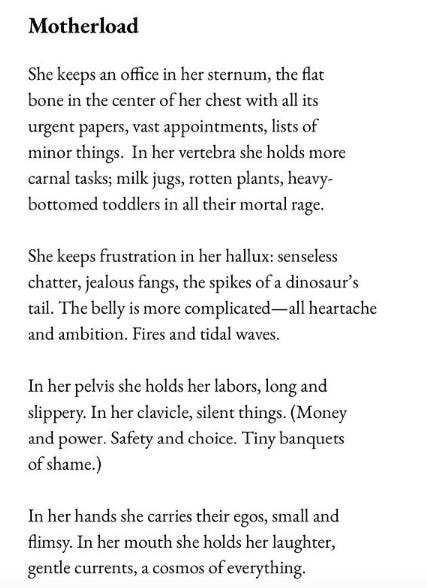
(Motherload by Kate Baer)
Mothers. Our hands heal and bruise and wring and soothe. We create worlds within us, through us, all around us. And our children know nothing of what they have awakened in us.
